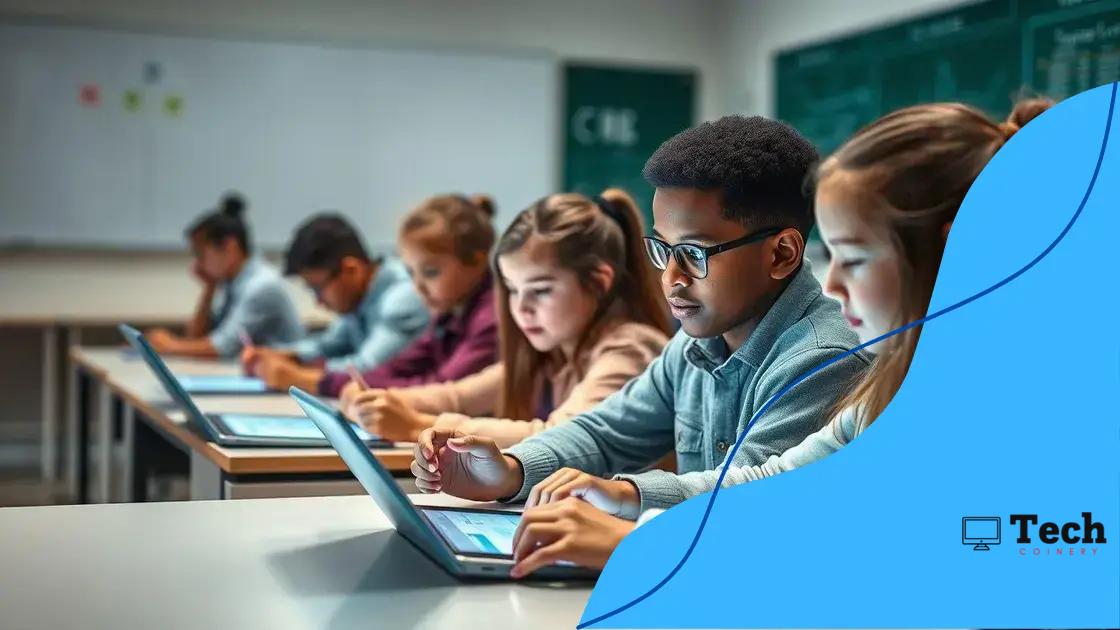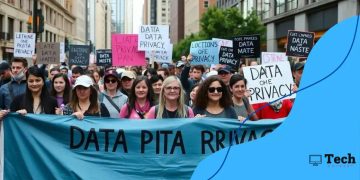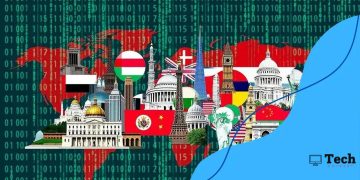AI in education: uncovering the benefits and risks

AI in education personalizes learning and streamlines classroom management, but requires responsible implementation to address data privacy concerns and algorithm biases.
AI in education is changing the way students learn and teachers instruct. Have you ever thought about how technology can enhance learning experiences? In this article, we’ll dive deep into the benefits and risks of integrating AI into our classrooms.
understanding AI in education
Understanding AI in education is essential for grasping how it shapes modern learning experiences. As technology evolves, the integration of AI in classrooms opens numerous opportunities for enhanced education.
What Is AI?
AI, or Artificial Intelligence, refers to systems that can perform tasks requiring human-like intelligence. In the context of education, this means using algorithms and data analysis to support learning.
How AI Benefits Students
Students gain personalized learning experiences through adaptive learning platforms. These tools analyze performance and tailor content to meet individual needs, promoting efficient learning.
- Personalized learning pathways.
- Immediate feedback mechanisms.
- Enhanced engagement through interactive tools.
Moreover, AI can assist in identifying learning gaps. For example, if a student struggles with math, AI can recommend specific exercises to strengthen their understanding. This targeted approach helps students to improve their skills effectively.
Teacher Support with AI
AI technologies also streamline teachers’ workload, allowing them to focus more on instruction. Automated grading systems can quickly assess student work, providing time for teachers to interact more with their classes. Additionally, AI can manage administrative tasks, supporting teachers in creating a more productive learning environment.
- Automated grading and feedback.
- Data-driven insights for lesson planning.
- Time-saving administrative support.
As educators embrace AI, they must also consider the potential risks that come with these powerful tools, including data privacy and the impact on teacher-student relationships. Balancing these opportunities with mindful implementation will define the future of AI in education. Recognizing the implications of AI allows for more informed decisions that benefit both students and educators alike. By understanding how AI works, we can utilize its strengths while addressing any challenges posed in this transformative journey.
benefits of AI for students and teachers
Benefits of AI for students and teachers are significant, as this technology enhances the learning experience for both. The integration of AI tools creates a more interactive and personalized educational environment.
Enhancing Student Learning
For students, AI provides a tailored educational journey. With adaptive learning platforms, each student’s unique needs can be met effectively. This means that every learner can advance at their own pace, receiving support exactly when it’s needed.
- Individual learning paths based on performance.
- Immediate feedback on assignments and quizzes.
- Access to a wealth of resources personalized to interest.
Additionally, AI tools can assist students in developing essential skills. For instance, language apps leverage AI to offer pronunciation guidance and language practice, making learning an interactive experience.
Supporting Teachers Effectively
Teachers also benefit from AI through reduced administrative tasks. Automated grading systems allow teachers to spend less time on assessments and more time engaging with students. This shift can help create a more dynamic classroom atmosphere.
- Time-saving grading and feedback systems.
- Data analytics for better understanding of student progress.
- Resources and lesson plans tailored by AI.
Furthermore, AI provides teachers with insights into student performance that were previously hard to obtain. By analyzing data, educators can identify which areas need more focus, ensuring no student is left behind.
Ultimately, the use of AI in education fosters improved communication and collaboration between students and teachers. By leveraging these technologies, classrooms become more engaging, adapting to the evolving educational landscape. This collaborative effort not only enhances learning outcomes but also prepares students for a technology-driven future.
potential risks associated with AI usage

Potential risks associated with AI usage are important to understand as schools increasingly adopt these technologies. While AI offers many benefits, it can also pose challenges that educators must consider.
Data Privacy Concerns
One major risk is data privacy. AI systems often collect and analyze vast amounts of personal information. This raises questions about how data is stored, who has access to it, and how it can be used. Schools must ensure they protect student data from breaches or misuse.
- Risk of unauthorized data access.
- Inadequate data protection practices.
- Potential misuse for profiling students.
Another area of concern involves the sharing of information with third parties. Many AI tools operate on external servers, which can complicate data ownership and control.
Bias in AI Algorithms
Another significant risk is the bias found in AI algorithms. These biases can result from the data fed into the AI systems. If the training data is not diverse or representative, the outcomes may be skewed, affecting student assessments and opportunities.
- Inequitable treatment of students.
- Reinforcement of stereotypes.
- Limited perspectives in educational resources.
When teachers rely on biased AI tools, they may inadvertently create an unfair learning environment. Thus, it is critical to regularly evaluate AI systems to ensure they deliver fair and accurate results.
Impact on Teacher-Student Relationships
Furthermore, integrating AI can impact the teacher-student relationship. Over-reliance on technology may reduce face-to-face interactions, which are essential for developing trust and rapport. Personal connections between teachers and students foster a supportive learning environment, and any decrease in this can affect student morale and engagement.
Educators should maintain a balance between technology use and personal interactions. While AI can assist in many tasks, the human touch in education remains irreplaceable. Understanding these potential risks allows educators to approach AI implementation thoughtfully, ensuring that technology enhances rather than detracts from the learning experience.
real-world applications of AI in schools
Real-world applications of AI in schools illustrate how this technology improves education. Schools worldwide are adopting AI tools to enhance learning experiences for both students and teachers.
Personalized Learning Experiences
One impactful application is in personalized learning. AI platforms analyze student performance data to create customized learning pathways. This means each student can learn at their own pace, focusing on areas where they need the most help.
- Adaptive learning systems tailor content based on student progress.
- Real-time feedback helps students adjust their learning strategies.
- Access to a variety of resources that match individual learning styles.
This approach not only supports academic growth but also fosters student engagement and motivation.
AI in Classroom Management
Another application of AI is in classroom management. AI tools can help teachers track attendance, manage schedules, and analyze classroom dynamics. For example, smart systems can detect when students are confused and alert the teacher to provide assistance promptly.
- Automated attendance tracking simplifies administrative tasks.
- Data analysis helps identify student needs and areas of improvement.
- Scheduling tools organize lessons effectively and save time.
By relieving teachers of administrative burdens, AI allows them to focus more on teaching and interacting with students.
AI for Enhanced Accessibility
AI also plays a crucial role in making education more accessible. Tools like speech recognition software support students with disabilities. For example, voice-to-text applications can assist students who struggle with writing or have visual impairments, enabling them to participate fully in classroom activities.
Moreover, language translation tools break down barriers for non-native speakers, helping them understand lesson content better. This creates a more inclusive environment where all students can thrive.
Real-world applications of AI in schools demonstrate its potential to transform education. As technology continues to evolve, the opportunities to enhance learning will grow, benefiting both students and teachers alike. By embracing these tools, educational institutions can innovate and adapt to meet the needs of every learner.
how to implement AI responsibly
How to implement AI responsibly is crucial for ensuring that education benefits from technology while minimizing risks. Schools must approach AI integration with a thoughtful plan that addresses ethical guidelines and best practices.
Develop Clear Policies
Establishing clear policies is the first step toward responsible AI use. These policies should outline how AI tools are selected and used in classrooms. Schools must assess the educational value of AI applications and ensure they align with the institution’s mission and values.
- Define the purpose of AI tools in the educational environment.
- Set guidelines for data privacy and security.
- Involve stakeholders like teachers, parents, and students in policy development.
By creating comprehensive policies, schools can guard against potential misuse and promote transparency.
Provide Training and Support
Another key aspect is offering training for educators. Teachers must understand how to utilize AI tools effectively while considering ethical implications. Professional development opportunities can help teachers integrate AI into their teaching practices confidently.
- Workshops on AI applications and their benefits.
- Resources for navigating ethical issues.
- Ongoing support for teachers during implementation.
When teachers are equipped with the right knowledge, they can better facilitate AI’s role in enhancing the classroom experience.
Monitor and Evaluate AI Tools
Regularly monitoring and evaluating the performance of AI tools is necessary to ensure they meet intended educational goals. By collecting feedback from both students and teachers, schools can identify what works and what doesn’t.
Data should be analyzed to understand how AI impacts learning outcomes. This evaluation process allows for adjustments and improvements, ensuring that AI continues to serve the needs of all students.
Furthermore, schools should remain open to adapting their approach as technology evolves. Being proactive establishes a culture of responsibility when using AI, demonstrating to students the importance of ethical considerations in a tech-driven world.
FAQ – Frequently Asked Questions about AI in Education
How can AI personalize learning for students?
AI can analyze individual student performance and adapt lessons to match their specific needs and learning styles.
What are the potential risks of using AI in schools?
Risks include data privacy concerns, algorithm biases, and the possibility of diminishing face-to-face interactions between teachers and students.
How can educators be trained to use AI effectively?
Training can involve workshops and professional development sessions focused on how to integrate AI tools into teaching practices while addressing ethical concerns.
What steps can schools take to monitor AI tools?
Schools should regularly collect feedback from students and teachers and analyze data on learning outcomes to evaluate the effectiveness of AI applications.






